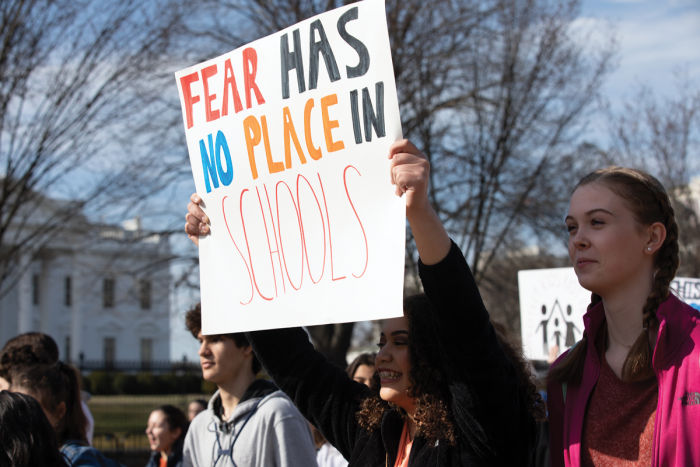Although the problem is widespread, not every school is affected. About one-third of the educators reported witnessing no incidents in the fall of 2018. Some noted that school had been in session for only a few months, but many others explained why their schools were hate-free.
Leadership is important. An elementary teacher in Maryland listed several school-based anti-bias initiatives and added, “Our principal is very strong in supporting [the initiatives] … and is determined to get more shareholder support from staff, students and community. I feel fortunate to be working in a school with such a forward-thinking anti-bias attitude and community.”
In Arizona, a teacher at a PreK-8 school wrote, “I consider my school a safe and tolerant place. Our administration is on top of behavior that may cause issues.”
And it’s not just administration. Everyone needs to be on board. “We have an amazing, supportive staff,” a Colorado high school teacher wrote. “This is a great place for students and staff!”
Others cited specific programs—including the Anti-Defamation League’s No Place for Hate; Learning for Justice’s Mix It Up at Lunch Day; Positive Behavioral Interventions & Supports strategies; and the Second Step anti-bullying program—as evidence of the beneficial steps that administrators were taking to set the right tone and expectations.
Many connected the need for a “welcoming” and “inclusive” school with the fact that their students represent traditionally marginalized populations. A Missouri elementary educator wrote, “We are a welcoming school and support and help our new immigrants.” Others noted that they serve LGBTQ families, have elementary students transitioning, or work in trauma-sensitive schools.

How We Can Turn Things Around
Every American must take steps to make our schools and our communities safe and more accepting:
- Elected leaders need to unequivocally denounce white supremacy and racist, xenophobic and anti-LGBTQ words and actions.
- Educators need to address these issues in their classrooms.
- We should all look at our local school boards and governments and ask if everyone in our community is represented, and we should work to hold local school authorities accountable for school climate and student safety.
- When we witness harassment, bullying or bigotry, we must be upstanders—modeling courage, compassion, empathy and civility.
- People of conscience—regardless of race or ethnicity, religious affiliation, sexual orientation or gender identity—must stand up for what is right. Bystanders contribute to the problem; upstanders help stop it. Apathy is not an option.
If we lead this work in each of our communities, we will begin to be knit together by our common support for each other. As educators, parents and students prepare for the new school year and candidates wage political campaigns, let us all respect America’s great diversity and reject hatred and division.
The Southern Poverty Law Center and Learning for Justice, then Teaching Tolerance, along with many other organizations, have signed onto a statement of principles under the banner of “Countering Hate.” We invite others to join us here.